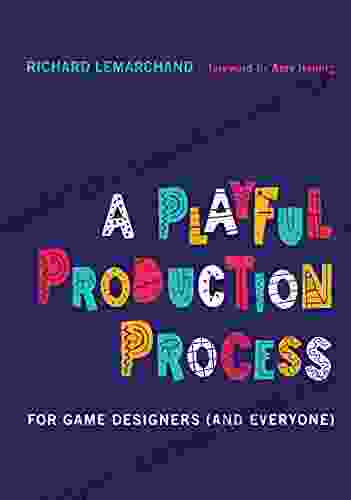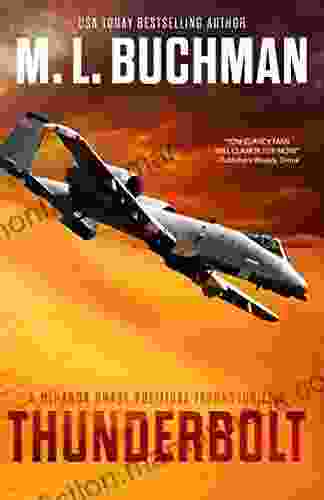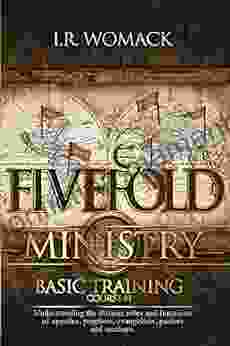The Ultimate Guide to Game Design - A Comprehensive Resource for Game Designers And Everyone

Game design is the process of creating a game. It involves a wide range of activities, from coming up with the initial concept to designing the game mechanics, art, and sound. Game design is a challenging but rewarding field, and there are many different types of games that can be created, from simple board games to complex video games.
4.8 out of 5
| Language | : | English |
| File size | : | 18677 KB |
| Text-to-Speech | : | Enabled |
| Enhanced typesetting | : | Enabled |
| X-Ray | : | Enabled |
| Word Wise | : | Enabled |
| Print length | : | 374 pages |
| Screen Reader | : | Supported |
What Does a Game Designer Do?
Game designers are responsible for the overall design of a game. They work with a team of other developers to bring the game to life, and they are involved in every aspect of the game's development, from the initial concept to the final product.
Game designers typically have a strong understanding of game theory and game mechanics. They are also skilled in art, design, and programming. Game designers often work with other professionals, such as artists, programmers, and writers, to create a cohesive and enjoyable game experience.
What Are the Different Types of Games?
There are many different types of games, from simple board games to complex video games. Some of the most popular types of games include:
- Board games are played on a physical board, and they typically involve rolling dice and moving pieces around the board. Board games can be simple or complex, and they can be played by people of all ages.
- Card games are played with a deck of cards, and they typically involve drawing cards and playing them in a certain order. Card games can be simple or complex, and they can be played by people of all ages.
- Role-playing games (RPGs) are games in which players take on the roles of characters in a fictional world. RPGs can be played with a group of friends or with a game master (GM). RPGs can be very complex, and they can last for hours or even days.
- Video games are played on a computer or video game console. Video games can be simple or complex, and they can be played by people of all ages. Video games often involve shooting, driving, or exploring a virtual world.
What Are the Principles of Game Design?
There are a number of principles that can be used to design a good game. Some of the most important principles include:
- Fun: The most important principle of game design is that the game should be fun to play. If the game is not fun, then players will not want to play it. Game designers can make a game fun by creating challenging and rewarding gameplay, by creating a compelling story, and by creating engaging characters.
- Challenge: A good game should be challenging, but not too challenging. If the game is too easy, then players will get bored. If the game is too difficult, then players will get frustrated. Game designers can create a challenging game by carefully balancing the difficulty of the game with the skills of the players.
- Reward: A good game should reward players for their success. Players should feel a sense of accomplishment when they complete a level, defeat a boss, or win a game. Game designers can create rewards by giving players points, items, or special abilities.
- Replayability: A good game should be replayable, meaning that players will want to play it again and again. Game designers can create a replayable game by adding different levels, characters, and challenges.
What Are the Techniques of Game Design?
There are a number of techniques that can be used to design a game. Some of the most common techniques include:
- Game mechanics: Game mechanics are the rules that govern the game. Game mechanics determine how players interact with the game, how the game progresses, and how players win or lose. Game designers can use game mechanics to create a variety of different gameplay experiences.
- Game art: Game art is the visual design of the game. Game art includes the characters, objects, and backgrounds that make up the game world. Game designers can use game art to create a unique and immersive experience for players.
- Game audio: Game audio is the sound design of the game. Game audio includes the music, sound effects, and voice acting that create the game's atmosphere. Game designers can use game audio to create a sense of suspense, excitement, or fear.
- Game story: The game story is the narrative that drives the game. The game story can be simple or complex, and it can be told through cutscenes, dialogue, or gameplay. Game designers can use the game story
4.8 out of 5
| Language | : | English |
| File size | : | 18677 KB |
| Text-to-Speech | : | Enabled |
| Enhanced typesetting | : | Enabled |
| X-Ray | : | Enabled |
| Word Wise | : | Enabled |
| Print length | : | 374 pages |
| Screen Reader | : | Supported |
Do you want to contribute by writing guest posts on this blog?
Please contact us and send us a resume of previous articles that you have written.
 Top Book
Top Book Novel
Novel Fiction
Fiction Nonfiction
Nonfiction Literature
Literature Paperback
Paperback Hardcover
Hardcover E-book
E-book Audiobook
Audiobook Bestseller
Bestseller Classic
Classic Mystery
Mystery Thriller
Thriller Romance
Romance Fantasy
Fantasy Science Fiction
Science Fiction Biography
Biography Memoir
Memoir Autobiography
Autobiography Poetry
Poetry Drama
Drama Historical Fiction
Historical Fiction Self-help
Self-help Young Adult
Young Adult Childrens Books
Childrens Books Graphic Novel
Graphic Novel Anthology
Anthology Series
Series Encyclopedia
Encyclopedia Reference
Reference Guidebook
Guidebook Textbook
Textbook Workbook
Workbook Journal
Journal Diary
Diary Manuscript
Manuscript Folio
Folio Pulp Fiction
Pulp Fiction Short Stories
Short Stories Fairy Tales
Fairy Tales Fables
Fables Mythology
Mythology Philosophy
Philosophy Religion
Religion Spirituality
Spirituality Essays
Essays Critique
Critique Commentary
Commentary Glossary
Glossary Bibliography
Bibliography Index
Index Table of Contents
Table of Contents Preface
Preface Introduction
Introduction Foreword
Foreword Afterword
Afterword Appendices
Appendices Annotations
Annotations Footnotes
Footnotes Epilogue
Epilogue Prologue
Prologue Kindle Edition
Kindle Edition Karen Szymusiak
Karen Szymusiak Jack Daniels
Jack Daniels Dee Watson
Dee Watson Jeremy Tyson
Jeremy Tyson Mayank Mishra
Mayank Mishra Jody Day
Jody Day Turid Rugaas
Turid Rugaas Sez Kristiansen
Sez Kristiansen Steve Olson
Steve Olson Nrich
Nrich Robert Samuels
Robert Samuels Kristin Kobes Du Mez
Kristin Kobes Du Mez Om Krishna Uprety
Om Krishna Uprety D H Lawrence
D H Lawrence Brad Smith
Brad Smith Patrick Hasburgh
Patrick Hasburgh Suzuki Aika
Suzuki Aika Washington Irving
Washington Irving Elizabeth Muriel
Elizabeth Muriel
Light bulbAdvertise smarter! Our strategic ad space ensures maximum exposure. Reserve your spot today!

 Edison MitchellThe World Economic Forum: Driving Global Cooperation and Shaping the Future
Edison MitchellThe World Economic Forum: Driving Global Cooperation and Shaping the Future Houston PowellFollow ·11.8k
Houston PowellFollow ·11.8k Natsume SōsekiFollow ·3k
Natsume SōsekiFollow ·3k Devin RossFollow ·10.1k
Devin RossFollow ·10.1k Will WardFollow ·18.3k
Will WardFollow ·18.3k J.D. SalingerFollow ·3.2k
J.D. SalingerFollow ·3.2k Isaiah PriceFollow ·11.4k
Isaiah PriceFollow ·11.4k Felipe BlairFollow ·9.8k
Felipe BlairFollow ·9.8k Gabriel BlairFollow ·10.3k
Gabriel BlairFollow ·10.3k

 Steve Carter
Steve CarterUnveiling the Rich Theatrical Tapestry of Russia: A...
Origins and Early...

 Frank Butler
Frank ButlerOn Talking Terms With Dogs: Calming Signals and the...
For centuries, dogs have...

 Leo Tolstoy
Leo TolstoyThe Inside Guide to Applying and Succeeding in...
Applying to...

 Cole Powell
Cole PowellThe Political Economy of Global Finance, Farming and...
The global...
4.8 out of 5
| Language | : | English |
| File size | : | 18677 KB |
| Text-to-Speech | : | Enabled |
| Enhanced typesetting | : | Enabled |
| X-Ray | : | Enabled |
| Word Wise | : | Enabled |
| Print length | : | 374 pages |
| Screen Reader | : | Supported |














